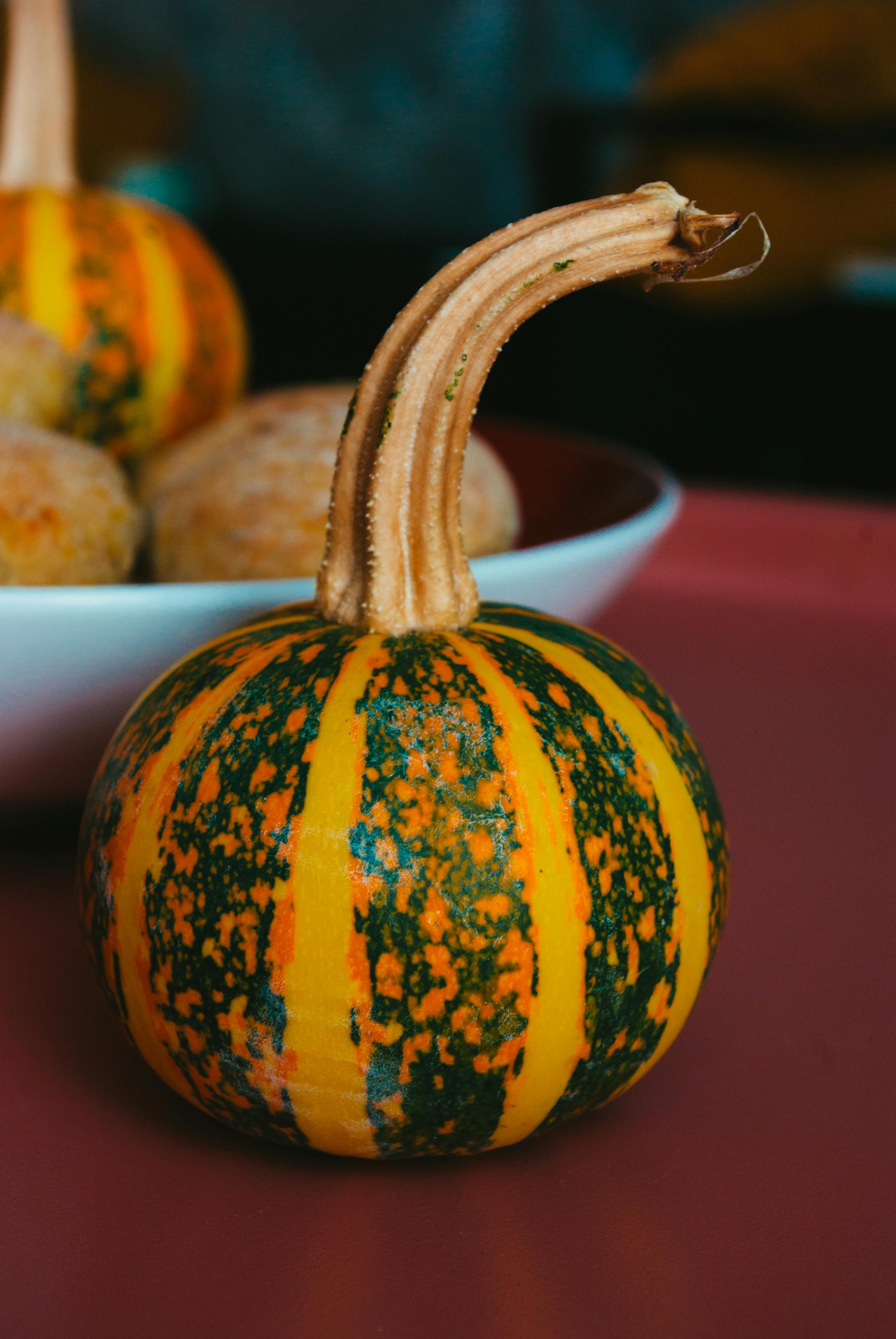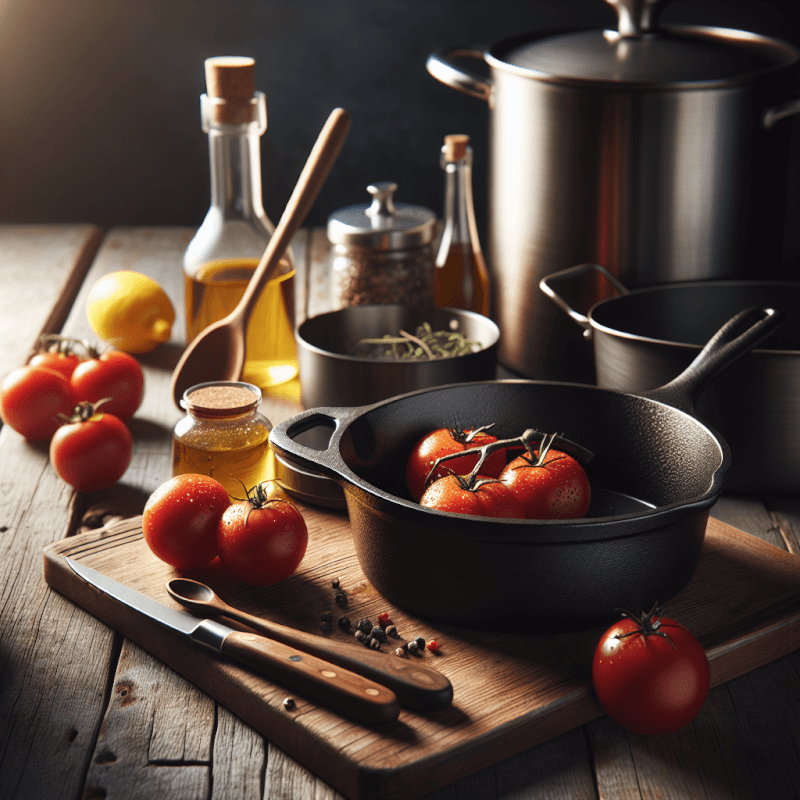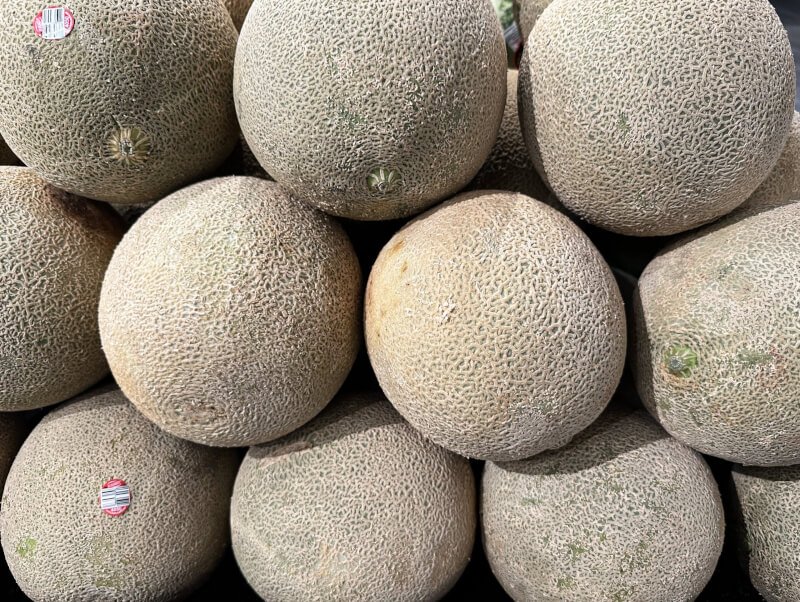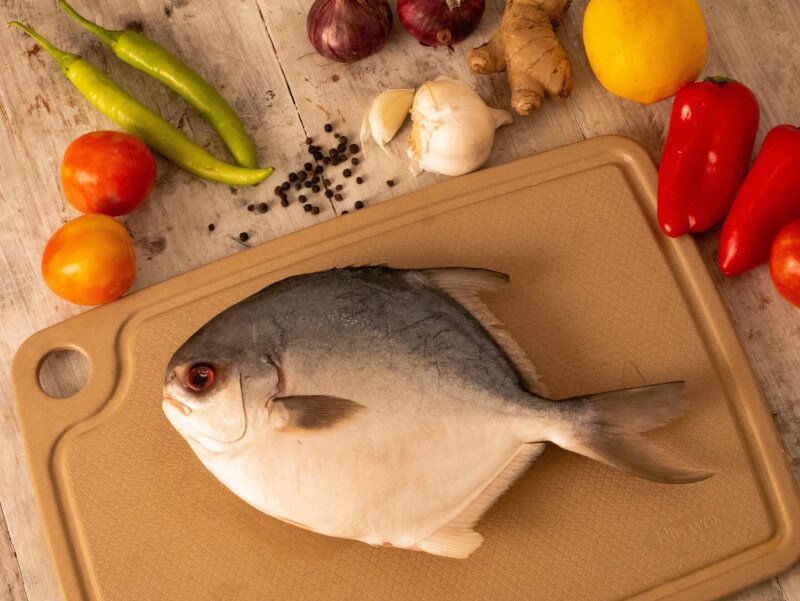When it comes to cooking with acidic ingredients like tomatoes, choosing the right cookware can make a big difference in the outcome of your dish. The acidity of tomatoes can react with certain types of cookware, resulting in undesirable tastes and even discoloration. To avoid this, it is important to select cookware that is non-reactive and specifically designed to handle acidic ingredients. In this article, we will explore some of the best options for cookware that will ensure your tomato-based recipes are tasty and vibrant every time. So, let’s dive in and discover the ideal cookware for your acidic culinary adventures!

Stainless Steel Cookware
Benefits of Stainless Steel Cookware
Stainless steel cookware is a popular choice for many home chefs, and for good reason. One of the main benefits of stainless steel cookware is its durability. This material is known for its resistance to rust, corrosion, and staining, which means it will last for many years with proper care. Stainless steel also has excellent heat conductivity, allowing for even and efficient cooking. Additionally, stainless steel cookware is non-reactive, which means it won’t interact with acidic ingredients like tomatoes, preserving the flavor and color of your food.
Best Stainless Steel Cookware for Cooking with Tomatoes
When it comes to cooking with tomatoes, there are a few stainless steel cookware options that are highly recommended. One top choice is a stainless steel saucepan with a thick, heavy bottom. This will help to distribute heat evenly and prevent hot spots, ensuring that your tomato-based sauces or stews cook evenly. Another great option is a stainless steel stockpot, which is ideal for making large batches of tomato soup or pasta sauce. Look for cookware that is labeled as “18/10 stainless steel,” as this indicates that it is made of high-quality stainless steel.
Cleaning and Maintenance Tips for Stainless Steel Cookware
To keep your stainless steel cookware looking its best, it’s important to follow some cleaning and maintenance tips. Firstly, avoid using abrasive cleaners or scrubbers, as they can scratch the surface of the stainless steel. Instead, use a non-abrasive sponge or cloth with warm, soapy water to clean your cookware. If stains or discoloration occur, you can try soaking the cookware in a mixture of vinegar and water or using a stainless steel cleaner. Lastly, to prevent sticking, preheat your stainless steel cookware before adding any ingredients, and use a small amount of oil or cooking spray.
Cast Iron Cookware
Benefits of Cast Iron Cookware
Cast iron cookware has long been cherished by home cooks for its versatility and ability to retain heat. When it comes to cooking with tomatoes, cast iron is an excellent choice because it is a durable and non-reactive material. The thickness of cast iron allows for slow, even cooking, which is perfect for tomato-based dishes that benefit from long simmering. Plus, cooking with cast iron can add a subtle depth of flavor to your food, enhancing the taste of your tomato-based recipes.
Best Cast Iron Cookware for Cooking with Tomatoes
When selecting cast iron cookware for cooking with tomatoes, a cast iron Dutch oven is a top recommendation. The thick walls and tight-fitting lid of a Dutch oven make it perfect for cooking tomato sauces, stews, or soups. The superior heat retention of cast iron ensures that your tomato-based dishes will cook evenly and stay hot for longer periods of time. Additionally, a cast iron skillet is another great option for cooking tomato-based dishes that require browning or sautéing.
Cleaning and Maintenance Tips for Cast Iron Cookware
To keep your cast iron cookware in top condition, it’s important to properly clean and maintain it. After each use, wash your cast iron cookware with hot water and a brush or non-abrasive sponge. Avoid using soap, as it can strip the seasoning that creates the non-stick surface of cast iron. Instead, scrub the cookware with a mixture of coarse salt and water to remove any food residue. After cleaning, thoroughly dry the cookware and apply a thin layer of oil to protect it from rust. Store your cast iron cookware in a dry place to prevent moisture damage.
Enamel Coated Cookware
Benefits of Enamel Coated Cookware
Enamel coated cookware is a popular choice for those looking for a non-reactive and easy-to-clean option. The enamel coating creates a smooth and non-stick surface, making it ideal for cooking with acidic ingredients like tomatoes. Additionally, enamel coated cookware comes in a variety of vibrant colors, adding a touch of style to your kitchen. This type of cookware also provides excellent heat distribution, ensuring that your tomato-based dishes cook evenly.
Best Enamel Coated Cookware for Cooking with Tomatoes
When it comes to cooking with tomatoes, enamel coated Dutch ovens and skillets are highly recommended. The enameled cast iron construction of Dutch ovens provides the same benefits as traditional cast iron cookware, but with the added advantage of the non-reactive enamel coating. This makes it perfect for cooking tomato sauces, stews, or soups. Enamel coated skillets are also a great option for browning or sautéing ingredients for your tomato-based dishes.
Cleaning and Maintenance Tips for Enamel Coated Cookware
To clean enamel coated cookware, it’s best to avoid harsh cleaners or abrasive scrubbers that can damage the enamel surface. Instead, wash the cookware with warm, soapy water and a non-abrasive sponge. For stubborn stains, you can try soaking the cookware in a mixture of baking soda and water. Avoid using metal utensils when cooking with enamel coated cookware to prevent scratching. After cleaning, thoroughly dry the cookware to prevent moisture damage.
Copper Cookware
Benefits of Copper Cookware
Copper cookware is often renowned for its excellent heat conductivity. When cooking with tomatoes, copper cookware can provide precise temperature control and even heat distribution, resulting in perfectly cooked tomato-based dishes. Copper is also a visually appealing material, adding a touch of elegance to your kitchen. Additionally, copper cookware has antimicrobial properties, making it a hygienic choice for cooking with acidic ingredients.
Best Copper Cookware for Cooking with Tomatoes
When it comes to cooking with tomatoes, copper pots and pans with a stainless steel or tin lining are recommended. The stainless steel or tin lining acts as a barrier between the acidic tomatoes and the copper, preventing any reactive interaction. A copper saucepan or sauté pan would be excellent choices, as they allow for precise heat control and even cooking.
Cleaning and Maintenance Tips for Copper Cookware
To maintain the beauty and functionality of your copper cookware, it’s important to clean and care for it properly. Copper cookware can develop a natural patina over time, which many people find desirable. However, if you prefer to keep your copper cookware shiny, you can use copper cleaning solutions or a mixture of lemon juice and salt. Avoid using abrasive cleaners or scrubbers on copper, as they can damage the surface. It’s also important to dry your copper cookware thoroughly after washing to prevent tarnishing.

Nonstick Cookware
Benefits of Nonstick Cookware
Nonstick cookware is loved by many home cooks for its easy food release and effortless cleaning. When it comes to cooking with tomatoes, nonstick cookware can prevent your tomato-based dishes from sticking to the pan and make the cooking process a breeze. Additionally, nonstick coatings are typically made of materials that are non-reactive, keeping the flavors of your tomato-based dishes intact.
Best Nonstick Cookware for Cooking with Tomatoes
When selecting nonstick cookware for cooking with tomatoes, it’s important to choose high-quality options that are free from harmful chemicals. Look for cookware with a PFOA-free nonstick coating to ensure safety and durability. A nonstick sauté pan or skillet would be ideal for cooking tomato-based sauces, pastas, or stir-frys. Nonstick stockpots or saucepans are also great for making tomato soups or stews.
Cleaning and Maintenance Tips for Nonstick Cookware
To preserve the nonstick properties of your cookware, it’s essential to clean and maintain it properly. Avoid using abrasive cleaners or scrubbers, as they can damage the nonstick coating. Instead, wash your nonstick cookware with warm, soapy water and a soft sponge or cloth. If food residue is stubborn, you can try soaking the cookware in warm water before cleaning. Additionally, avoid using metal utensils on nonstick surfaces, as they can cause scratches. Opt for silicone or wooden utensils instead.
Aluminum Cookware
Benefits of Aluminum Cookware
Aluminum cookware is known for its excellent heat conductivity and affordability. When it comes to cooking with tomatoes, aluminum cookware can provide fast and even heat distribution, allowing your tomato-based dishes to cook quickly and precisely. Aluminum is also a lightweight material, making it easy to handle in the kitchen.
Best Aluminum Cookware for Cooking with Tomatoes
When selecting aluminum cookware for cooking with tomatoes, it’s important to choose options that have a non-reactive coating or are anodized. Aluminum cookware with a non-reactive coating, such as stainless steel or ceramic, can prevent any interaction between the acidic tomatoes and the aluminum. An aluminum saucepan or skillet would be great choices for cooking tomato-based sauces, stews, or stir-frys.
Cleaning and Maintenance Tips for Aluminum Cookware
To clean aluminum cookware, avoid using harsh cleaners or abrasive scrubbers that can damage the surface. Instead, wash the cookware with warm, soapy water and a non-abrasive sponge. If stains or discoloration occur, you can try using a mixture of vinegar and water or a specialized aluminum cleaner. Avoid using metal utensils when cooking with aluminum cookware to prevent scratching. After cleaning, thoroughly dry the cookware to prevent water spots or tarnishing.

Carbon Steel Cookware
Benefits of Carbon Steel Cookware
Carbon steel cookware is a favorite among professional chefs for its excellent heat conductivity and durability. When it comes to cooking with tomatoes, carbon steel cookware can provide even heat distribution, resulting in perfectly cooked tomato-based dishes. Additionally, carbon steel develops a natural nonstick patina over time, making it ideal for cooking with acidic ingredients like tomatoes.
Best Carbon Steel Cookware for Cooking with Tomatoes
For cooking with tomatoes, a carbon steel skillet or sauté pan is highly recommended. These types of cookware allow for precise heat control and even cooking, ensuring that your tomato-based dishes turn out delicious. A carbon steel wok is also a great choice for stir-frying tomato-based dishes.
Cleaning and Maintenance Tips for Carbon Steel Cookware
To clean carbon steel cookware, it’s important to avoid using harsh cleaners or abrasive scrubbers that can damage the surface. Instead, wash the cookware with hot water and a non-abrasive sponge. If food residue is stubborn, you can use a mixture of baking soda and water to scrub the surface gently. After cleaning, thoroughly dry the cookware to prevent rust. To maintain the nonstick patina, it’s recommended to season the cookware regularly with a thin layer of oil.
Clay Cookware
Benefits of Clay Cookware
Clay cookware has been used for centuries and is loved for its ability to retain heat and impart a unique flavor to dishes. When it comes to cooking with tomatoes, clay cookware can enhance the taste and texture of your tomato-based recipes. The porous nature of clay allows for the slow release of steam, helping to tenderize and intensify the flavors. Additionally, clay cookware is free from any chemicals or coatings, making it a natural and non-reactive option for cooking with acidic ingredients.
Best Clay Cookware for Cooking with Tomatoes
For cooking with tomatoes, clay pots or cazuelas are the best choices. These earthenware vessels allow for slow, gentle cooking, which is perfect for tomato-based stews, soups, or roasted dishes. The round shape of a clay pot ensures even heat distribution and helps to trap moisture, creating tender and flavorful results.
Cleaning and Maintenance Tips for Clay Cookware
To clean clay cookware, it’s best to avoid using harsh detergents or abrasive scrubbers. Instead, wash the cookware with warm water and a soft sponge. Allow the cookware to air dry completely before storing. It’s important to note that clay cookware should be handled with care to avoid any accidental breakage. Avoid drastic temperature changes, such as placing a hot pot directly into cold water, as it can cause cracking. Regularly check for any cracks or chips in the cookware, as they can compromise its functionality.

Glass Cookware
Benefits of Glass Cookware
Glass cookware is loved for its transparency, allowing you to monitor the cooking process without lifting the lid. When it comes to cooking with tomatoes, glass cookware is an excellent choice as it is non-reactive and retains heat well. The ability to see the food as it cooks can help prevent overcooking or scorching. Additionally, glass cookware is safe to use in the oven, making it versatile for various tomato-based recipes.
Best Glass Cookware for Cooking with Tomatoes
When cooking with tomatoes, a glass baking dish or casserole dish is highly recommended. These glass cookware options are perfect for making tomato-based casseroles, lasagnas, or baked pasta dishes. The even heat distribution of glass ensures that your dishes cook evenly from all sides.
Cleaning and Maintenance Tips for Glass Cookware
To clean glass cookware, use warm, soapy water and a non-abrasive sponge. Avoid using abrasive cleaners or scrubbers, as they can scratch the glass. If stains or baked-on food are difficult to remove, you can soak the cookware in warm water with baking soda before cleaning. Glass cookware is also dishwasher-safe, but it’s important to handle it with care to avoid any accidental breakage. When storing glass cookware, be mindful of stacking heavy items on top to prevent damage.
Conclusion
When it comes to cooking with acidic ingredients like tomatoes, the right choice of cookware can make a significant difference. Stainless steel, cast iron, enamel coated, copper, nonstick, aluminum, carbon steel, clay, and glass cookware all have their unique benefits and considerations. Whether you prefer the durability of stainless steel, the versatility of cast iron, or the natural flavors imparted by clay, there is a cookware option suitable for your tomato-based recipes. Remember to choose cookware that is non-reactive, provides even heat distribution, and is easy to clean and maintain. With the right cookware, you can unleash your culinary creativity and enjoy delicious tomato-based dishes with confidence.



